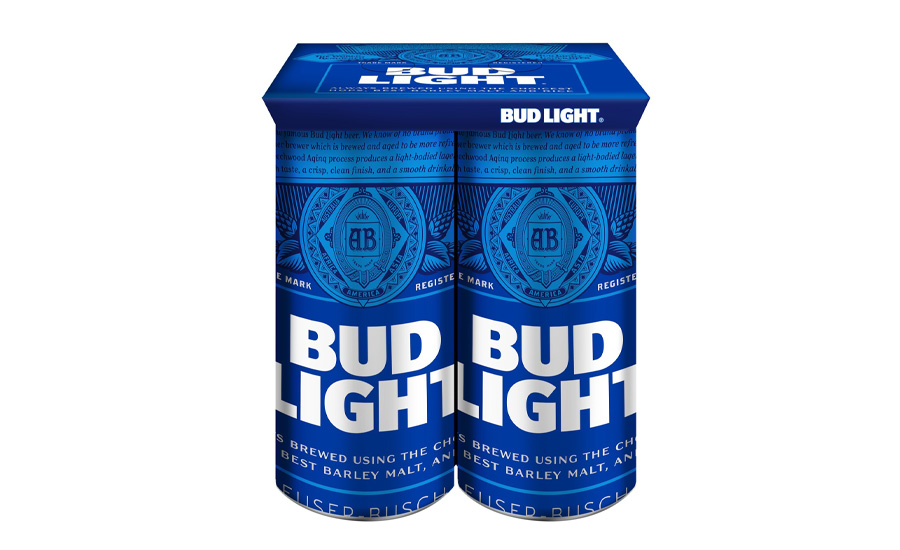Packaging Materials
Sustainability is driving secondary pack innovations for beverage-makers
Fiber-based solutions help support holistic, premium approaches by brands

When discussing the reduce portion of the “reduce, reuse and recycle” mantra, school programs will challenge their students to find ways to reduce how much water they use or the electricity usage at home. For beverage-makers, the conversations surrounding single-use plastic has them looking at new ways to reduce the amount they use of it when it comes to their secondary packaging.
“Sustainability tends to drive toward fiber-based packaging solutions and away from plastic rings and shrink film, even the options utilizing recycled content,” says Steve Gould, business development director for Atlanta-based Graphic Packaging International (GPI). “The market is split between those focused on the individual secondary pack and those taking a more holistic approach looking at the issue from a total pallet perspective.”
In terms of secondary packaging, Gould notes that fiber-based packaging solutions can deliver on sustainability while still providing a premium look and feel.
“For those focused on the secondary package, some are looking for the lowest fiber, lowest cost solution, others are looking to take the opportunity to move to a fiber-based package but premiumize the package or differentiate brands as part of the transition,” he explains. “Secondary packaging options such as KeelClip can be a great way of achieving multiple goals. This new solution is a clip style pack that works with a wide range of can styles and multiple product configurations. KeelClip includes a center keel which secures the product for dependable delivery.”
The beverage industry has seen some major brands announce their commitment to reduce single-use plastic for their secondary, including Coors Light, a brand of Chicago-based Molson Coors Beverage Co.

Image courtesy of Graphic Packaging International
Earlier this year, the domestic beer brand announced it will eliminate plastic rings from packaging globally, where Molson Coors owns brewing operations. To support the move to more sustainable packaging, Molson Coors will invest $85 million, thereby enabling Coors Light to begin the transition to fully recyclable and sustainably sourced cardboard-wrap carriers later this year, it said.
As part of the investment, Molson Coors will upgrade packaging machinery, which also will allow the company’s entire North American portfolio of brands to advance to cardboard wrap carriers by the end of 2025. In total, the move by Molson Coors will save 1.7 million pounds of plastic waste annually, it stated.
“We believe that buying beer shouldn’t mean buying plastic,” said Marcelo Pascoa, vice president of marketing for the Coors family of brands, in a statement. “That’s why we’re taking a step toward making packaging even more sustainable, and with this achievement Coors Light will save 400,000 pounds of single-use plastic from becoming waste every year.”
In terms of the more holistic view that GPI’s Gould also references, he explains that tray film elimination is one way that brands are looking to reduce plastic usage. “When using KeelClip for example, the can tops are covered, and the packs lock neatly within the tray footprint, this enables the removal of the film, and unlocks additional savings whilst maintaining pallet stability and performance throughout the supply chain,” he says.
Given the efforts by beverage manufacturers to address single-use plastic reduction, Gould expects this will continue to permeate throughout the secondary packaging market.
“I would expect this focus to continue for sure,” he says. “It will be necessary to drive down the fiber content further and look at new and exciting alternatives to keep aligned with our customers’ visions.”
Adapting for the future
Although sustainability is a driving force influencing the secondary packaging market, experts note that other influences are impacting future innovations for this sector. Among those is the rise in eCommerce for consumable products.
However, the rise in eCommerce might conflict with various sustainability measures brands are looking to implement.
“This is a sector that is expanding rapidly and to a certain extent, flies in the face of sustainability from a package requirements perspective,” GPI’s Gould says. “This is an issue particularly for glass and for the larger, heavier configurations.
“That said, it will only grow, and we all need to focus and adapt,” he continues. “Primary container development will help along with innovative ways of eliminating impact damage. The successful concepts will be those which combine the strength qualities required along with the premium image and feel to support the opening experience.”
Beyond the eCommerce effect, Gould notes that consumers wanting customized and premium products also is leaving an impact on the secondary packaging market.
“Premiumization and customization will continue to be drivers with more and more focus on individuality, uniqueness and the experience,” Gould says. “COVID has also had an impact so that cleanliness/protection are also important factors.
“All in all, it’s a great time to be involved in fiber-based secondary packaging,” he continues. “Sustainability and the market changes and legislation are driving innovation even further.”
Looking for a reprint of this article?
From high-res PDFs to custom plaques, order your copy today!







